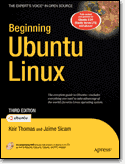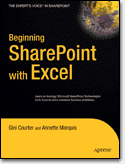作者:James Tisdall
出版日期:October 22, 2001
出版社:O'Reilly
页数:400
ISBN:978-0596000806
文件格式:PDF
Amazon.com ReviewBiology, it seems, is a goodshowcase for the talents of Perl. Newcomers to Perl who understandbiological information will find James Tisdall’s Beginning Perl for Bioinformaticsto be an excellent compendium of examples. Teachers of Perl willlikewise find the text to be filled with fresh programmingillustrations of growing scientific importance. Seasoned Perlmongerswho want to learn biology, however, should search elsewhere, asTisdall’s emphasis is on Perl’s logic rather than Mother Nature’s.
Departing from O’Reilly’s earlier monograph Developing Bioinformatic Computer Skills,Tisdall’s text is organized aggressively along didactic lines. Nearlyall of the 13 chapters begin with twin bullet lists of Perl programmingtools and the bioinformatic methods that require them. Likewise, thechapters end with exercises. String concatenation is illustrated withgene splicing, and regular expressions are taught with genetranscription and motif searching.
Tisdall emphasizes sequence examples throughout, leading up to anintroduction to a Perl interface for the NIH GenBank biologicaldatabase and the widely used BLAST sequence alignment tool. After abrief discussion of three-dimensional protein structure, he returns tosequence extraction and secondary structure prediction.
Tisdall’s goal is to boost the beginning programmer into a domain ofself-learning. He imparts essential etiquette for the success ofprogramming newbies: use the wealth or resources available, from userdocumentation to Web site surveys to FAQs to How-To’s to news groupsand finally to direct personal appeals for help from a seniorcolleague. A well-plugged-in bioinformatics Perl student will soondiscover Bioperl, an open-source effort to bring research-gradebioinformatic tools to the Perl community. Bioperl is described brieflyat the end of Tisdall’s book and will reportedly be a forthcoming titleof its own in the O’Reilly bioinformatics series.
Although he introduces bioinformatics as an academic discipline,Tisdall treats it as a trade throughout his book. He indicates thatopen questions and computational hard problems exist, but does notdescribe what they are or how they are being tackled. Ultimately,Tisdall presents bioinformatics as another arrow in a bench scientist’squiver, very much like HPLC, 2D-PAGE, and the various spectroscopies.
As odd as a “bioinformatics-as-tool” book may be to its researchproponents, the reduction of bioinformatics to trade status bothdeflates and vindicates the years of research, as Tisdall’s workattests. –Peter Leopold
Product DescriptionWith its highly developedcapacity to detect patterns in data, Perl has become one of the mostpopular languages for biological data analysis. But if you’re abiologist with little or no programming experience, starting out inPerl can be a challenge. Beginning Perl for Bioinformatics isdesigned to get you quickly over the Perl language barrier byapproaching programming as an important new laboratory skill, revealingPerl programs and techniques that are immediately useful in the lab.Each chapter focuses on solving a particular bioinformatics problem orclass of problems, starting with the simplest and increasing incomplexity as the book progresses. Each chapter includes programmingexercises. By the end of the book you’ll have a solid understanding ofPerl basics, a collection of programs for such tasks as parsing BLASTand GenBank, and the skills to take on more advanced bioinformaticsprogramming.






 评论 (2)
评论 (2) 